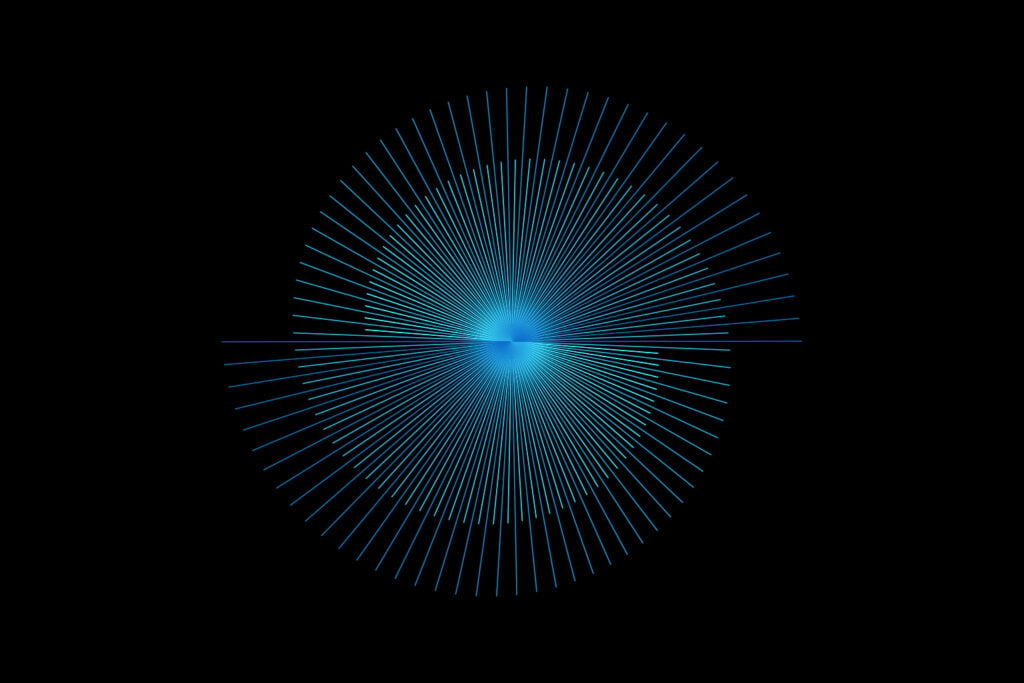Whether you are considering filing or have already filed your patent application, it is crucial for inventors and startups alike to have a surface-level understanding of patent applications, patent continuation and the importance of strategic patent filings.
Considering the pace at which technology is constantly advancing, it is often wise to consider continually refining and expanding the scope of your patent claims to capture the full scope of your patentable invention’s potential. While one patent application may protect your existing invention, it is just as important to continue to protect ongoing improvements to your inventions.
This is where continuation patent applications can be particularly useful. This article will highlight everything you need to know about the importance of evolving your patent through a continuation patent application.
Continuation patent applications explained. What is a continuation of a patent?
Continuation patent applications are an essential tool for inventors and startups in the pursuit of deep and prolonged protection of their technologies. In essence, a continuation application is a separate application that allows you to pursue additional claims that are based upon the same description and disclosures as the original patent application; also known as the “parent” application. Continuations may protect previously describe iterations of your invention, or in the case of continuations-in-part, new iterations.
There are several statutory requirements a continuation must satisfy. According to the United States Patent and Trademark Office (USPTO), this second application must be filed before the original application becomes either abandoned or issued. To ensure the continuation remains limited to the disclosures of the original patent application, it should not include or claim anything that would be considered new subject matter if it was inserted into the original application.
Filing a continuation is an effective way to take your initial application and turn it into two or more patents and is a strategy every successful applicant considers. Since you cannot include any new matter in your continuation, the original application should aim to combine claims that are both broad and narrow in scope so that a door is left open for a continuation to address individual claims that may have been objected to or rejected.
Drafting a comprehensive claim set during this initial phase ensures that those who may attempt to use your patented technology later will face significant legal hurdles. In doing so, it is possible that the original application will describe multiple inventions or multiple embodiments of an invention, and it may only receive protections for a subset of the disclosed invention(s).
Thus, before the parent application is issued as a patent, one or more patent continuation applications can be filed to help gain patent coverage for these additional inventions or embodiments disclosed in the initial application. Crucially, there is no limit to the number of continuations an applicant may file.
Once you receive a Notice of Allowance from the USPTO, you should be considering filing a patent continuation application prior to issuance of the parent application. If you choose not to file a continuation prior to issuance of the parent, you will effectively be limiting yourself to the patent protections offered by the original application which may not be broad enough to provide adequate legal protections against competitors or contemplate future improvements of your technology. Therefore, there are a plethora of reasons you should avoid limiting the scope of your parent application’s protections and consider filing a continuation application.
Benefits of Continuation Patent Applications
By filing at least one continuation application, also known as the “child” application, the patentee will retain the ability to update or modify their claimed subject matter which will expand presence in the marketplace. There are several reasons you should consider pursuing a continuation application as part of your patent prosecution strategy.
First, continuations allow you to claim multiple inventions. This is because the USPTO often determines that an application describes multiple inventions, and a patent can only claim one. In such circumstances, the USPTO may issue a restriction requirement which distinguishes each invention and requests that the applicant only select one for final examination. Through techniques like a divisional patent application, for example, an inventor can claim any inventions left unclaimed in a parent application.
Likewise, continuation applications allow you to seek broader protection of your claims. Since the scope of your claims while your parent application is pending is uncertain, a continuation can help keep the scope ambiguous for your competitors. Often, patent protection is granted for claims that provide only narrow coverage. When faced with an objection from an examiner for instance, an applicant might react swiftly and try expediting their claims to limit them to a specific embodiment of their invention or accepting the limitation offered by the examiner on their pending claims. In this scenario, an applicant can leverage a continuation application to pursue significantly broader protection of their claim set.
Continuation applications are also inherently beneficial with respect to how rapidly technology is advancing. Having a pending continuation application in your back pocket can open to door to tailor your application to cover future technological advances so long as covered in the original parent application. Savvy inventors and corporations often keep at least one continuation application pending at all times to maintain a strategic advantage over competitors.
Finally, circumstances may arise where you find it necessary to try deferring a decision on your parent application and costs of your invention overall. Continuation applications can be useful in such a case by essentially resetting the examination timeline by abandoning the original parent application in favor of a continuation application containing similar claims, while also maintaining your original filing date.
Drawbacks of Continuation Patent Applications
There are a few disadvantages to filing a continuation application compared to an entirely new patent application. First, a continuation application will not provide an earlier priority date for any claims containing new subject matter presented. Any new claims addressing new subject matter will receive a priority date corresponding to the date on which the continuation application itself was filed, while claims presented in the parent application will retain the same priority date as when that application was filed.
Thus, any new claims in the continuation application to the same 20-year protection term that is based on the given date the parent application was filed. This shortened term of protection can prove problematic down the line considering the lifetime on many types of patent applications lasts a few years.
Another issue that may arise with continuation applications is that any given description or statement in the parent application will be used to narrowly construe the language of the continuation application. This becomes particularly problematic if the claim set of the parent application is not broad enough to enable a strong continuation application. Similarly, if it has been more than one year between the parent and the continuation applications, certain disclosures made in the parent application may be considered prior art as they relate to any new claims in the continuation. In this scenario, an applicant may be leaving themselves open to the USPTO issuing a rejection to their continuation on obviousness grounds.
Working with a skilled patent attorney can help you overcome these disadvantages by tailoring your patent strategy to take advantage of continuations, while avoiding their disadvantages.
How is a Patent Continuation Different from the Original Patent?
The key difference that distinguishes a continuation from the original patent is that a continuation allows the patentee to pursue additional claims present in the original that the patentee’s competitor’s may be trying to mimic. Throughout the filing process on the parent application, it is far more challenging for the inventor to foresee all the possible ways that competitors may attempt to copy the invention without infringing upon it. A continuation application gives the patent holder the chance to leverage this hindsight to tack on new claims present in the original application that competitors may try to recreate later.
When can you file a Patent Continuation?
As previously mentioned, a continuation application must be filed while the original application is pending. A pending patent application is simply one that has not yet been abandoned or issued.
So when should you be filing a continuation application? At times, it may make sense to file it in tandem with a response to a USPTO Office action. Here, you can file a continuing application within the 3-month deadline of substantive Office actions without having to pay any late fees. If you have already received a Notice of Allowance, it is best practice to have your patent attorney work with you to file your continuation application before paying the issue fee.
Continuation vs. Continuation-in-Part vs. Divisional patent applications
There are 3 effective mechanisms through which an inventor may make modifications to the original parent application: A Continuation Application, a Continuation-In-Part Application, and a Divisional Application. These differ strictly in the types of modifications they allow an inventor to make.
As previously mentioned, a continuation allows an inventor to add new claims to a parent application, as long as the application hasn’t been issued or abandoned.
A continuation-in-part (CIP), allows for “repeating some substantial portion or all of the earlier nonprovisional application and adding matter not disclosed in the said earlier nonprovisional application.” CIP applications are a great avenue for protecting new improvements to the invention described in the parent application. Claims in a CIP that recite added matter do not maintain the priority date of the parent application, but can assist in protecting new developments that are so closely related to the parent application that the new developments simply cannot work without the description of the parent application.
By filing a CIP application, the applicant can protect additional inventions or improvements that have been made since the filing of the original application. This allows for the broadening of the scope of protection and ensures that the latest developments related to the original invention are included in the patent application.
A divisional application is commonly filed to divide or split a previously filed patent application into separate applications. It is typically filed when the original application covers multiple inventions or multiple aspects of an invention, which may be restricted to different applications by the USPTO. A divisional application retains the filing date and priority of the original application, which means that it benefits from the same priority rights and is subject to the same rules and regulations as the original application. However, it is treated as a separate application and undergoes its own examination process.
By filing a divisional application, the applicant can pursue separate protection for different inventions or aspects of the original application. This allows for greater flexibility in obtaining patent protection and enables the applicant to tailor the claims and scope of protection to each individual invention.
What are the costs associated with filing a patent continuation?
The Rapacke Law group charges between $3,500-$6,500 per continuation, CIP, or divisional but cost can vary based on the law firm or filing strategy. The Rapacke Law Group’s fees are flat-rate which means no surprise billing for hourly rates, government fees, or unexpected costs.
Speak with an experienced patent attorney
If you’re considering filing a patent application, continuation, CIP, or divisional, consult a Rapacke Law Group patent attorney free of charge.




